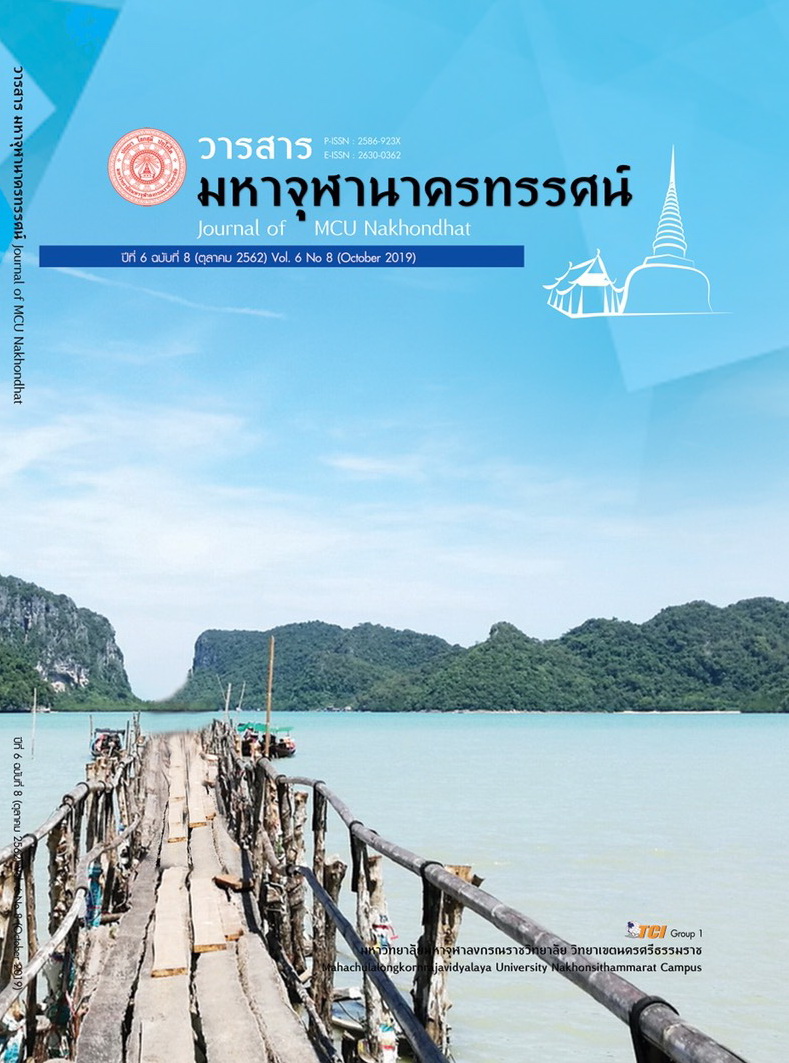A STRATEGY FOR BRAND CREATION OF HIGHLY FAMOUS PRIVATE SCHOOLS
Main Article Content
Abstract
The objectives of this research were to 1) study the components and indicators of the strategy for brand creation of highly famous private schools 2) study the current situation and desirable conditions of brand creation of highly famous private schools 3) develop the strategy for brand creation of highly famous private schools. The sample groups were 296 private school administrators and teachers under cluster 11 by using stratified random sampling method. The research instruments were 5-level rating scale structured questionnaire, questionnaire and evaluation form for assessing the strategy to check its appropriateness and possibility. The statistics used for data analysis included frequency distribution, percentage, mean, standard deviation and PNIModified
The research results were found that:
- The components of the strategy for brand creation of highly famous private schools consisted of 7 components as follows: 1) reputation 2) identity 3) corporate culture, 4) relationship 5) brand awareness 6) brand personality 7) information technology
- The current situation of a strategy for brand creation of highly famous private schools, in all, was rated at moderate level. The desirable condition of a strategy for brand creation of highly famous private schools in all, was rated at the highest level.
- The strategy for brand creation of highly famous private schools consisted of 5 strategies as follows: Strategy 1: promotion and development of quality organizational culture. Strategy 2: brand personality building. Strategy 3: identity development for sustainable schools. Strategy 4: making school reputation renowned and manifest. Strategy 5: enabling information technology.
Article Details
References
จุมพล รามล. (2557). รูปแบบความสัมพันธ์เชิงสาเหตุของปัจจัยที่มีอิทธิพลต่อแบรนด์โรงเรียนเอกชน. วารสารวิชาการศรีปทุม ชลบุรี, 11(1). 74-81.
นรรถสรรพ เล็กสู่. (2558). การพัฒนาองค์ประกอบและตัวบ่งชี้คุณลักษณะเด่นชัดเฉพาะของโรงเรียน สู่ความเป็นโรงเรียนประถมศึกษาเอกชนยอดนิยมในภาคใต้. วารสารบริหารการศึกษาบัวบัณฑิต มหาวิทยาลัยราชภัฏอุบลราชธานี, 15(ฉบับพิเศษ), 191-202.
ไพฑูรย์ สินลารัตน์. (2559). การศึกษาไทย 4.0 เป็นยิ่งกว่าการศึกษา. กรุงเทพมหานคร: โรงพิมพ์แห่งจุฬาลงกรณ์มหาวิทยาลัย.
สำนักงานคณะกรรมการส่งเสริมการศึกษาเอกชน. (2556). แผนยุทธศาสตร์ส่งเสริมการศึกษาเอกชน พ.ศ. 2556-2560. กรุงเทพมหานคร: โรงพิมพ์ สกสค.
อรอุษา ปุณยบูรณะ. (2558). การบริหารเทคโนโลยีสารสนเทศและการสื่อสารของโรงเรียนสาธิต. ใน ดุษฎีนิพนธ์ปรัชญาดุษฎีบัณฑิต สาขาวิชาการบริหารการศึกษา. มหาวิทยาลัยศิลปากร.
อุทัย ดุลยเกษม. (2547). ยุทธศาสตร์สังคมไทยในการสร้างวิถีแห่งการเรียนรู้. กรุงเทพมหานคร: องค์การค้าคุรุสภา.
Aaker David A. (2002). Building Strong Brands. Bath: CPI Bath Press.
Bartell M. (2003). Internationalization of universities: A university culture-based framework. Higher Education, 45(1), 43-70.
DiMartino C and Jessen SB. (2016). School brand management: The policies, practices, and perceptions of branding and marketing in New York City’s public high schools. SAGE journals, 51(5), 447-475.
Goh E. & Dolnicar S. (2006). Choosing a primary school in Australia: eliciting choice deter mining factors using the theory of planned behavior. Paper presented at the he Conference on Global Governance Educational Change & Cultural Ecology. Canberra : Australian National University.
Kazoleas Dean Kim Yungwook &Moffit Mary Anne. (2001). Institutional Image: A Case Study.Corporate Communication. An International Journal, 6(4), 205-216.
Melewar T.C. Akel S. (2005). The role of corporate identity in the higher education sector: a case study. Corporate Communications, 10(1), 41-57.
Mount Joan & Belanger Charles H. (2004). Entreneurship and Image Management in Higher Education: Pillars of Massification. The Canadian Journal of Higher Education, 34(2), 125-140.
Wongkritrungruang W. (2005). From world to Thailand, a new direction of learning into the 21st century. Retrieved August 12, 2019, from https:// thaipublica.org / 2015 / 03 /education-forthe-future_1 (in Thai).


